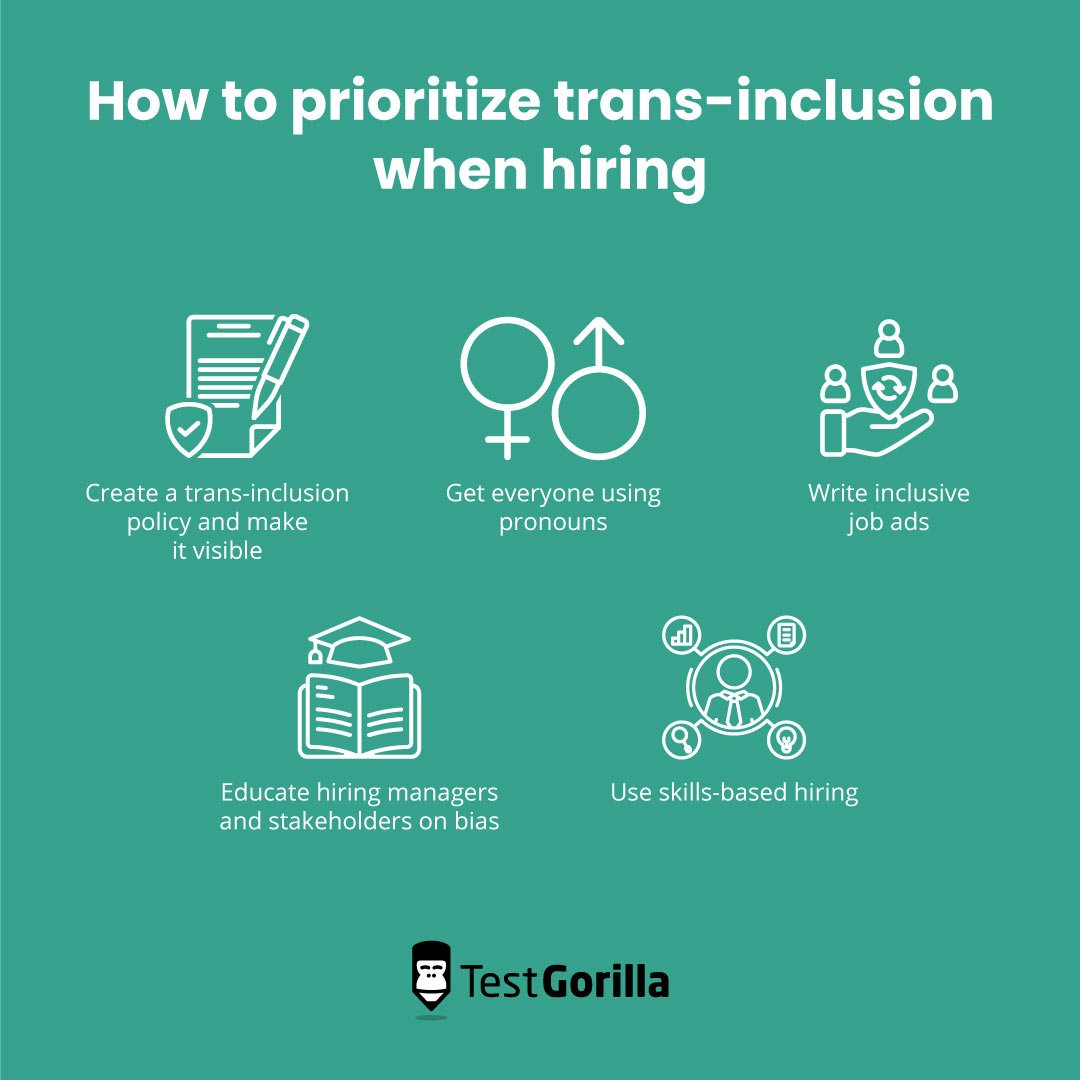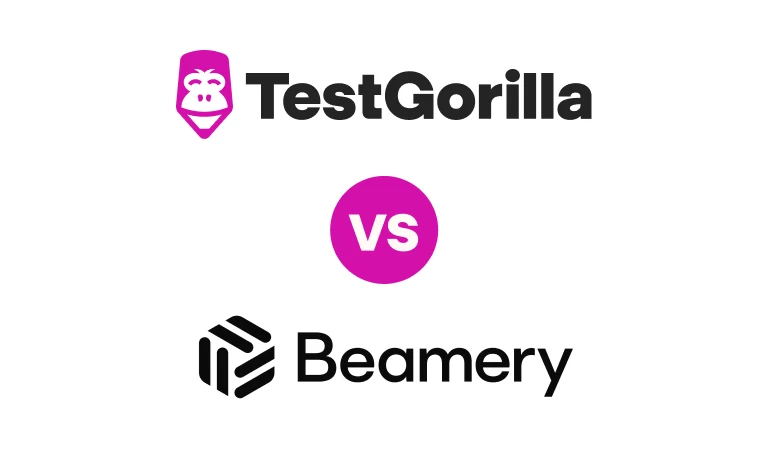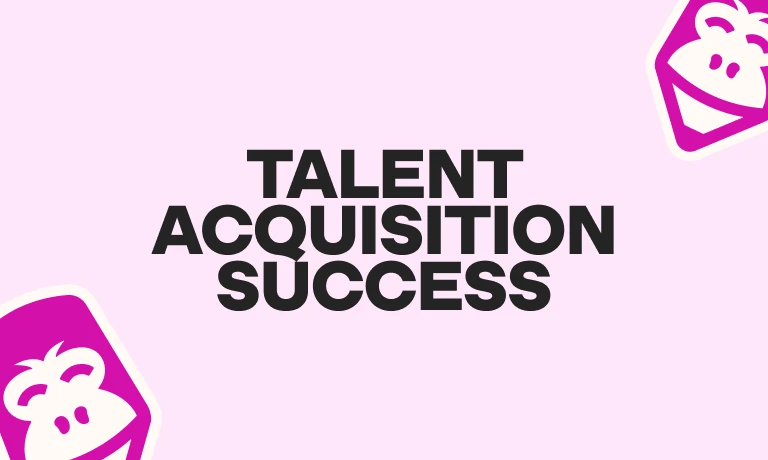According to a recent Mckinsey report, there are 2 million transgender people in the US.[1] Yet transgender adults are twice as likely as cisgender individuals to be unemployed. At the same time, more than half say they’re not comfortable being ‘out’ at work, find it harder to get promoted, and feel less supported by their managers.
Since 2020, the US Department of Labor has explicitly prohibited discrimination and harassment based on gender identity.[2]
However, policy is one thing and application on the ground is another, and many workplaces lag behind. That’s why organizations need to take positive, intentional steps to create a trans-inclusive workplace.
In this piece, we’ll look at some policy options and best practices that your company can adopt to include transgender people in your diversity and inclusion (D&I) efforts.
Let’s start with some definitions
Transgender:
An umbrella term to refer to people whose gender identity and/or expression is different from the sex they were assigned at birth. It can refer to those who intend to or have undergone gender-affirming care, or those who choose to not do so at all. It might mean different things to different people within the community, with many not identifying themselves within the male-female gender binary at all. |
Non-binary:
An umbrella term describing a person whose gender identity doesn’t fit exclusively within the traditional gender binary. While some non-binary individuals identify as transgender, not all do. The debate is still ongoing within the community. |
Cisgender:
A term to describe those whose gender identity largely aligns with the societal and cultural expectations associated with the gender they were assigned at birth. |
Misgendering:
The act of intentionally or unintentionally referring to a person using language that doesn’t align with their affirmed gender. For example, referring to a woman as “he” or calling a non-binary person a “woman” as opposed to a “person.” |
Trans rights in 2023: What the law says
In the US, the state of trans rights is a mixed bag. While some states like New York and California have made great progress in protecting trans individuals, others like Tennessee have enacted discriminatory laws. However, since June 2020, federal law protects trans workers from employment discrimination.
In 2020, the European Union (EU) adopted a strict LGBTIQ Equality Strategy for 2020-2025 which includes measures to further protect the rights of transgender individuals.
For instance, the Court of Justice of the European Union protects against discrimination based on sex and gender. The European Commission also promotes diversity management through the EU Platform of Diversity Charters. The signatories establish internal LGBTQ+ networks, provide frequent training for their staff, and participate in national Pride events.
In the UK, the 2010 Equality Act protects trans individuals from discrimination, bias, and harassment at work. The 2020 Taylor v Jaguar Land Rover Ltd tribunal court case also set a precedent for the protection of non-binary gender and gender fluid identities.[3]
While the UK’s 2004 Gender Recognition Act aims to enable transgender individuals to achieve legal recognition in their affirmed gender, the process is still very complicated.[4] That’s because trans people are required to provide extensive documentation, including a medical diagnosis of gender dysphoria and proof of having lived in their affirmed gender for at least two years, to complete it.[5]
Let’s take a look at how trans rights are actually respected in practice.
The best insights on HR and recruitment, delivered to your inbox.
Biweekly updates. No spam. Unsubscribe any time.
Trans rights in 2023 in practice
Thirty-four percent of LGBTQ+ employees leave their jobs due to a lack of psychological safety and support by their employers.[6]
We spoke to a number of trans individuals from different parts of the world to find out more about their experience in the workplace, specifically when it comes to feeling supported and seen.
Noa Theo is a social work student in Bern. Regarding his previous work experience, he says:
I worked at a restaurant before I had fully transitioned. I feel like I was always looked at as if I was still a ‘girl’ and I was never taken seriously… I tried to make our workplace more inclusive and suggested changes like providing tampons in the men’s bathroom…[But they weren’t] open to my suggestions as a trans person. When I spoke up to management [about my coworkers’ bad behavior towards] me, they didn’t look into things until I quit.
Noa Theo, social work student in Bern
Many trans people have difficulty getting hired, facing discrimination as well as conscious and unconscious bias during the application and interviewing process.
Clay Slang is a Growth Product Manager at TestGorilla. Before joining our team, he was working as a freelancer and searching for full-time positions:
“I had gone to the final round interview for a role, and I was misgendered in the interview,” he says. “They gave me a verbal offer… but never ended up sending [it] to me afterwards… When something like that happens, it causes a panic response… and completely distracts from the ability to be professional and present yourself well in an interview environment.”
However, every trans person’s experience is different and attitudes vary between countries, sectors, and workplaces.
For example, Quinn R., a social worker in Germany, has had a largely positive experience with their employer and team members:
“The cool thing about being a social worker in Germany is that we are pretty accepting,” says Quinn. “Acceptance is a necessary part of being a good social worker. We constantly are confronted with this topic at university, we talk about equality, acceptance, inclusion. We even have to take exams or do presentations about those topics… You simply can’t be an [intolerant] person and be a good social worker.”
“Misgendering is still a thing…and everyone reacts differently to me being nonbinary,” they continue. “But I’m fully accepted at my workplace and everyone treats me with respect.”
So while the road to a more equitable and inclusive workplace can seem long, there are many steps you can take to create a more people-centric work environment.
Let’s take a look at what these steps are, from hiring to retaining and rewarding your people.
Getting started with transgender inclusion when hiring
In addition to being the right thing to do, having a diverse workforce can transform your business.
According to McKinsey, gender and racially diverse teams perform better than their homogeneous counterparts. And companies are starting to take note. In fact, 76.8% of employers we surveyed in our State of Skills-Based Hiring report said their organizations have plans to improve D&I in the near future.
Here are a few ways to prioritize trans-inclusion when hiring:
1. Create a trans-inclusion policy and make it visible
Creating a trans-inclusion policy shows your commitment to D&I. It sends a clear message that your organization values the trans community and actively tries to create a safe and welcoming space for them.
It can also provide clarity and guidance for existing staff and leaders. By setting out clear expectations for behavior and actions, the policy helps prevent unintentional discrimination or exclusion.
For example, you can outline the steps that the organization will take to prevent discrimination, harassment, or other forms of mistreatment based on gender identity or expression.
You can also make the policy visible on the company website and job postings to reflect your organization’s values. This not only helps existing employees feel supported, but sends a message to any applicants that they’re valued in your workplace.
2. Get everyone using pronouns
Encouraging employees, regardless of their gender identity, to explicitly share and include their pronouns in their everyday work environment helps normalize the practice. It also creates a space where their gender-diverse peers can feel comfortable sharing theirs too.
You and your people can include your pronouns on your LinkedIn profile, email signatures, Slack name, and video conferencing name. For example:
Noa Theo (He/Him)
Clay Slang (He/Him)
Quinn R. (They/Them)
When it came to applying for jobs, Quinn used to end their emails with something like:
“Friendly Greetings, Quinn R.
Please refer to me as Quinn due to the fact I’m nonbinary and don’t identify as a woman or a man.”
“It can take some time to get used to,” Noa says. “But when it happens, it makes you feel seen. Like you can be here [without facing] pain or struggle.”
3. Write inclusive job ads
Writing inclusive job postings is one of the best ways to make people of all genders feel more comfortable. To do this, use inclusive, gender-neutral language. For example, avoid using “he” or “she,” and use “they” or “you” instead.
Additionally, stay away from gendered job titles. Use job titles that are not gender-specific to encourage a more diverse pool of applicants. For example, instead of using “salesman,” use “sales representative,” or instead of “waitress,” use “waitstaff” or “server.”
Finally, be mindful of pronouns. When speaking about an applicant, potential hire, or existing employee, use their preferred pronouns. If you’re not sure what they are, use gender-neutral pronouns like “They/Them” until you can confirm their preferences. You can also start interviews by sharing your own pronouns and asking the interviewee for theirs.
“Imagine being constantly excluded…[and justifying] your identity to a lot of people,” says Quinn. “But being called the correct name, being seen,…all of this makes us feel a little more wanted and supported in this society and means the world to us.”
4. Educate hiring managers and stakeholders on bias
Educating hiring managers and stakeholders on bias and trans-inclusion is crucial to creating a more accepting workplace that welcomes and supports individuals of any identity. It also gives managers the correct language and vocabulary to have these important conversations with their reports and peers.
Start by providing training sessions, workshops, or even micro-learning programs. Teach employees about unconscious bias, gender identity, trans-inclusive policies and practices, and how to create a safe and supportive workplace.
You can also reinforce inclusive messaging and behaviors with reminders and regular check-ins. By providing timely reminders during onboarding and through regular training sessions, emails, or other communication channels, you can address unconscious bias and stress its importance in your organization.
5. Use skills-based hiring
Competency-based hiring practices level the playing field and give everyone a fair chance right off the bat, regardless of their sex, gender, background, physical ability, or education. According to our findings, 91% of employers who used skills-based hiring saw an increase in diversity, and 92.7% reduced the number of mis-hires.
This recruitment method is better for your people, too. In fact, 72.1% of the employees hired are happier, leading to increased retention rates.
Clay notes that adopting unbiased, objective hiring practices shows your company’s dedication to D&I as a value. When talking about his experience with applying to TestGorilla, he says:
Coming into the interview, I wasn’t concerned that I was going to be treated in a way that didn’t feel good because I already knew that the intention to give me an equal opportunity was there.
Clay Slang, Growth Product Manager at TestGorilla.
If you’re relying on resume-screening methods, use blind resumes to mitigate unconscious bias. This hides resume details like the applicant’s gender, photo, date of birth, and geographical location.
Keep in mind that this recruitment approach is at the top of the hiring funnel and sets you up for an unbiased hiring process. To continue building a trans-inclusive workplace, you need to take some additional steps.
Highlight the protocol and company processes for transitioning employees and outline the roles and responsibilities of their managers, coworkers, and other staff.
Clearly state the company’s commitment to providing a supportive work environment for all employees, including transgender individuals, regardless of how they identify.
Address the steps that employees can take to transition at work, including how to request a name or gender marker change, and how to access any necessary medical or psychological care.
Outline the types of support that the company can offer such as counseling, flexible work arrangements, or time off for medical appointments.
Develop a process for training managers and coworkers on how to support transitioning employees, including how to use correct pronouns and names, and how to respond to any inappropriate behavior or harassment.
Making your organization more trans-inclusive
According to McKinsey, transgender employees are more than twice as likely as their cisgender peers to feel excluded and isolated. However, despite the ongoing difficulties trans individuals face in the workplace, there’s been massive progress in recent years and an overall shift to making workplaces more inclusive through D&I policies and initiatives.
Here’s how you can be a part of this change:
1. Show your support
The first thing you can do to boost a sense of belonging is to celebrate the people you work with and show pride in your LGBTQ+ team members. You can do that by commemorating notable events and dates like Pride Month, International Transgender Day of Visibility, and Genderfluid Visibility Week.
You can also:
Support LGBTQ+ causes by making donations, volunteering, or sponsoring events.
Provide your people with mental health support, resources, and education.
Offer transgender health benefits to help support employees with the costs of gender-affirming care, family-building policies not solely focused on infertility, and preventative care.
2. Set up employee resource groups
An employee resource group (ERG) is a space where people with similar goals, identities, and interests – like trans employees – can connect, offer support, and voice any concerns. It creates a welcoming company culture, helps people feel heard, and gives you an avenue to collect crucial feedback on the effect of company policies and how to improve them.
For example, the IT services and consulting firm Accenture has 120,000 Pride allies across all the countries it operates, and ERGs in 45 countries. These groups organize a range of activities and initiatives like:
Education:Some ERGs focus on educating others within the company about LGBTQ+ issues, transgender parenthood, and gender identity and expression. They also provide resources to help create a more inclusive workplace.
Networking events:These events provide opportunities for LGBTQ+ employees to meet one another and build relationships, both professionally and personally.
Professional development: LGBTQ+ groups at Accenture often offer workshops, training sessions, and other professional development opportunities to help members advance their careers.
Community outreach:Some LGBTQ+ ERGs at Accenture participate in community outreach activities, such as volunteering at LGBTQ+ charities or participating in Pride events.
3. Create a transitioning at work policy
Coming out as trans and beginning to transition can be a period of acute stress and vulnerability. So the support of their workplace is invaluable to the well-being of transitioning individuals.
Here are some key steps to consider when developing your policy:
Highlight the protocol and company processes for transitioning employees and outline the roles and responsibilities of their managers, coworkers, and other staff.
Clearly state the company's commitment to providing a supportive work environment for all employees, including transgender individuals, regardless of how they identify.
Address the steps that employees can take to transition at work, including how to request a name or gender marker change, and how to access any necessary medical or psychological care.
Outline the types of support that the company can offer, such as counseling, flexible work arrangements, or time off for medical appointments.
Develop a process for training managers and coworkers on how to support transitioning employees, including how to use correct pronouns and names, and how to respond to any inappropriate behavior or harassment.
Finally, encourage feedback from your people and make adjustments as you go to ensure that the policy remains effective and inclusive.
Trans-inclusion in the workplace: A must for people-first organizations
Trans-inclusion in working environments has come a long way in recent years, in part thanks to various social and political movements and inclusive policies. But there’s still work to be done to create a truly diverse and psychologically safe workplace for transgender employees in different countries and sectors.
Because when it comes to the reality experienced by trans individuals around the world, the picture is more mixed.
That’s why, in this piece, we looked at some ways you can make your company a safer place to work for trans individuals – from creating a trans-inclusion policy and writing gender-neutral job ads to setting up employee resource groups and supporting your LGBTQ+ employees with healthcare benefits.
We also reviewed the benefits of using skills-based hiring and how this objective recruitment method can give applicants of any identity a fairer experience. By adopting these steps within your organization and actively listening to voices within the trans community, you can be well on your way to promoting D&I in your own company and helping to create a more inclusive and equitable world.
“I know it might seem overwhelming and like you can’t understand everything. Even I don’t understand everything sometimes,” Noa says. “But it’s okay to take your time and educate yourself to get closer to the rest of the world.” Sources
“Being transgender at work.” McKinsey. Accessed April 21, 2023. https://www.mckinsey.com/featured-insights/diversity-and-inclusion/being-transgender-at-work
“DOL policies on gender identity: rights and responsibilities.” US Department of Labor. Accessed. April 21, 2023. https://www.dol.gov/agencies/oasam/centers-offices/civil-rights-center/internal/policies/gender-identity#:~:text=DOL%27s%20policies%20also%20comport%20with,or%20expression%20is%20sex%20discrimination
“Ms R Taylor v Jaguar Land Rover Ltd: 1304471/2018.” Gov.UK. Accessed. April 21, 2023. https://www.gov.uk/employment-tribunal-decisions/ms-r-taylor-v-jaguar-land-rover-ltd-1304471-2018
“Equality Act 2010.” Legislation.gov.UK. Accessed April 21, 2023. https://www.legislation.gov.uk/ukpga/2010/15/contents
“Trans people in the UK.” Government Equalities Office. Accessed April 21, 2023. https://assets.publishing.service.gov.uk/government/uploads/system/uploads/attachment_data/file/721642/GEO-LGBT-factsheet.pdf
“LGBT People’s Experiences of Workplace Discrimination and Harassment.” UCLA School of Law, The Williams Institute. Accessed April 21, 2023. ”https://williamsinstitute.law.ucla.edu/publications/lgbt-workplace-discrimination/
You've scrolled this far
Why not try TestGorilla for free, and see what happens when you put skills first.




















